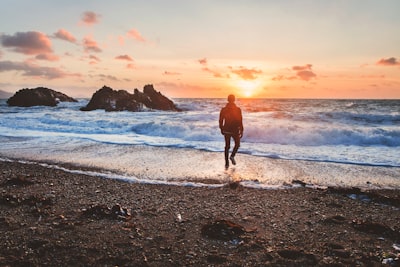
Mount Snowdon: At 3,560 feet (1,085 meters), Mount Snowdon is the highest peak in Wales and one of the most popular attractions in Snowdonia. Visitors can reach the summit by hiking, taking the Snowdon Mountain Railway, or using the Llanberis Path. Llyn Ogwen: This stunning glacial lake is surrounded by the dramatic peaks of the Glyderau and Carneddau mountain ranges. It's a popular spot for hiking, fishing, and enjoying the serene natural beauty. Beddgelert: This charming village is known for its picturesque streets, historic buildings, and the legend of the faithful dog, Gelert. Explore the village's shops, cafes, and the Gelert's Grave memorial. Zip World: Experience the thrill of the world's fastest zip line at Zip World Velocity, where you can soar over the historic Penrhyn Quarry at speeds up to 100 mph (160 km/h). Portmeirion: This unique Italian-style village was designed by architect Clough Williams-Ellis and is a popular filming location. Wander through the colorful buildings, gardens, and beaches. Conwy Castle: This impressive 13th-century castle, a UNESCO World Heritage Site, offers stunning views of the surrounding countryside and the town of Conwy. Aber Falls: These beautiful waterfalls, located near the village of Abergwyngregyn, are a popular hiking destination with scenic trails and stunning views. Harlech Castle: Perched atop a rocky outcrop, this medieval castle offers panoramic views of the Snowdonia mountains and the Welsh coast. Cadair Idris: This majestic mountain, with its glacial lakes and dramatic ridges, is a popular destination for hikers and outdoor enthusiasts. Sygun Copper Mine: Explore the underground tunnels and chambers of this former copper mine, which offers a glimpse into the region's industrial heritage. These are just a few of the many must-see attractions in Snowdonia National Park. Whether you're seeking outdoor adventures, historic sites, or simply breathtaking natural scenery, this region of Wales has something to captivate every traveler.
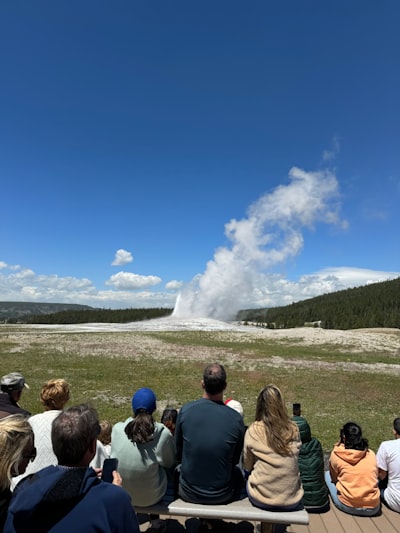
Anhinga Trail: This iconic boardwalk trail offers a unique opportunity to observe a variety of wildlife, including the graceful anhinga bird, alligators, turtles, and a diverse array of wading birds. The trail provides an up-close encounter with the Everglades' wetland habitats. Gumbo Limbo Trail: Explore the lush, tropical hardwood hammock forest along this scenic trail, where you can spot the distinctive gumbo limbo trees, also known as the "tourist tree" due to their peeling, reddish bark. Mahogany Hammock: Venture into one of the largest remaining stands of ancient, towering mahogany trees in the United States. This tranquil trail showcases the Everglades' diverse plant life and provides a glimpse into the park's unique ecosystem. Shark Valley: Rent a bicycle or take a tram tour to explore this expansive, flat landscape, which is home to a variety of wildlife, including alligators, wading birds, and the elusive Florida panther. The Shark Valley Observation Tower offers panoramic views of the surrounding wetlands. Flamingo: Situated at the southern tip of the park, Flamingo is a hub for various recreational activities, such as kayaking, canoeing, and fishing. Explore the mangrove-lined waterways and keep an eye out for the iconic pink flamingos that give the area its name. Everglades Airboat Tours: Experience the Everglades from a different perspective by taking an exhilarating airboat tour. These high-speed boats allow you to navigate the shallow, grassy waterways and get up close with alligators, birds, and other wildlife. Eco Pond: This peaceful freshwater pond is a prime location for birdwatching, with the opportunity to spot a variety of wading birds, waterfowl, and migratory species. Everglades National Park is a unique and captivating destination that offers a wealth of natural wonders and opportunities for exploration. By visiting these must-see attractions, you'll gain a deeper appreciation for the Everglades' diverse ecosystems and the importance of preserving this remarkable natural treasure.
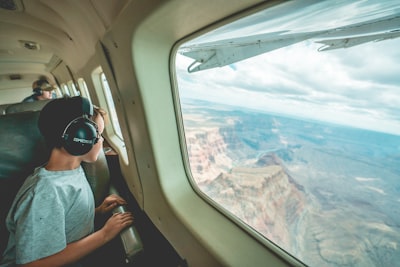
South Rim The South Rim is the most popular and accessible part of the Grand Canyon, offering stunning views and a variety of activities. The South Rim is open year-round and features several iconic viewpoints, including Mather Point, Yavapai Point, and Hermit's Rest, designed by renowned architect Frank Lloyd Wright. The Rim Trail, a 13-mile hiking path, provides easy access to these viewpoints and allows visitors to explore the canyon's edge. North Rim The North Rim is located approximately 220 miles from the South Rim and offers a more remote and less crowded experience. The North Rim is only open from mid-May to mid-October due to heavy snowfall during the winter months. Visitors can enjoy breathtaking views from the North Rim Visitor Center, the historic Grand Canyon Lodge, and the Bright Angel Point Trail, which offers panoramic vistas of the canyon. Havasu Falls Nestled within the Havasupai Indian Reservation, Havasu Falls is a stunning oasis with turquoise-blue waters and towering travertine formations. Access to Havasu Falls requires a permit and a strenuous 10-mile hike, but the breathtaking scenery is well worth the effort. Visitors can also explore the nearby Mooney Falls and Beaver Falls, creating a truly unforgettable experience. Skywalk The Grand Canyon Skywalk is a glass-bottomed bridge that extends 70 feet out over the edge of the canyon, providing visitors with a unique and thrilling perspective of the natural wonder. Located on the Hualapai Indian Reservation, the Skywalk offers panoramic views of the canyon and the Colorado River below. Helicopter Tours For a truly breathtaking aerial view of the Grand Canyon, consider taking a helicopter tour. These tours offer a bird's-eye perspective of the canyon's vast expanse, allowing visitors to see the intricate geological formations and stunning vistas from above. Rafting the Colorado River Adventurous travelers can experience the Grand Canyon from the Colorado River by embarking on a rafting expedition. These multi-day trips provide a unique opportunity to explore the canyon's inner gorge, with opportunities to hike, camp, and witness the canyon's diverse wildlife. Desert View Watchtower Designed by architect Mary Colter, the Desert View Watchtower is a historic landmark located on the South Rim of the Grand Canyon. Visitors can climb to the top of the tower for panoramic views of the canyon and the surrounding desert landscape. Geology Museum The Geology Museum, located at the South Rim Visitor Center, offers an in-depth look at the geological history of the Grand Canyon. Visitors can explore interactive exhibits, learn about the canyon's formation, and gain a deeper understanding of the region's unique geology. Bright Angel Trail The Bright Angel Trail is one of the most popular hiking trails in the Grand Canyon, offering a challenging but rewarding experience. The trail descends 4,380 feet to the Colorado River, providing hikers with stunning views and the opportunity to explore the canyon's inner depths. Hermit's Rest Designed by Frank Lloyd Wright, Hermit's Rest is a unique and architecturally significant building located on the South Rim. Visitors can explore the building, which houses a gift shop and snack bar, and enjoy the stunning views of the canyon from the surrounding area. These are the must-see attractions for your trip to the Grand Canyon National Park. From the breathtaking vistas of the South and North Rims to the hidden oases of Havasu Falls and the thrilling Skywalk, this iconic destination offers a wealth of experiences for travelers of all interests and abilities.
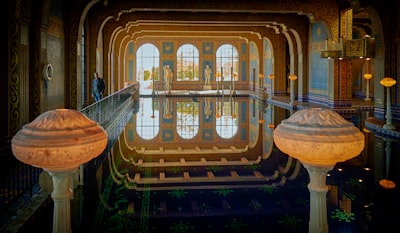
Going-to-the-Sun Road: This iconic 50-mile scenic drive takes you through the heart of Glacier National Park, offering breathtaking views of glaciers, alpine meadows, and towering mountain peaks. Stop at the Logan Pass Visitor Center to enjoy the stunning vistas and hike the nearby trails. Grinnell Glacier: One of the park's most famous glaciers, Grinnell Glacier is a stunning sight to behold. The hike to Grinnell Glacier is a challenging but rewarding experience, offering panoramic views of the glacier, turquoise-colored lakes, and the surrounding mountains. Avalanche Lake: This serene and picturesque lake is a popular destination for hikers. The 4.5-mile round-trip hike to Avalanche Lake takes you through a lush forest and past a stunning waterfall, culminating in the breathtaking view of the lake and the surrounding mountains. Waterton-Glacier International Peace Park: Glacier National Park is part of the Waterton-Glacier International Peace Park, a UNESCO World Heritage Site shared between the United States and Canada. Explore the Canadian side of the park for a unique perspective and additional hiking opportunities. Hidden Lake Overlook: The hike to the Hidden Lake Overlook is a must-do for visitors to Glacier National Park. The 5.4-mile round-trip trail takes you through alpine meadows and past stunning glacial lakes, culminating in a breathtaking view of the Hidden Lake and the surrounding peaks. Bowman Lake: Tucked away in the northwest corner of the park, Bowman Lake is a hidden gem. Enjoy the serene and peaceful atmosphere of this stunning lake, surrounded by towering mountains and lush forests.
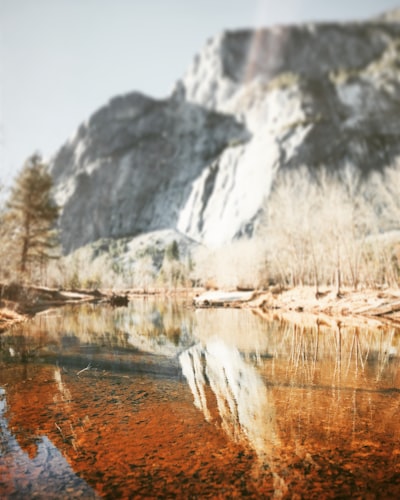
El Capitan: This iconic granite monolith, standing at an impressive 3,000 feet tall, is a renowned rock-climbing destination and a breathtaking sight for visitors. Witnessing the sheer scale and grandeur of El Capitan is a truly awe-inspiring experience. Yosemite Falls: The tallest waterfall in North America, Yosemite Falls is a stunning three-tiered cascade that plunges 2,425 feet. The best time to visit is during the spring and early summer when the water flow is at its peak. Half Dome: This famous granite dome is one of the most recognizable landmarks in Yosemite. Hiking to the top of Half Dome is a challenging but rewarding experience, offering panoramic views of the park's stunning scenery. Mariposa Grove of Giant Sequoias: Home to over 500 ancient giant sequoia trees, this grove is a must-see for nature lovers. These towering, centuries-old trees are some of the largest living organisms on Earth. Tuolumne Meadows: This high-altitude alpine meadow is a serene and picturesque destination, offering opportunities for hiking, camping, and exploring the park's diverse flora and fauna. Glacier Point: Perched atop a granite cliff, Glacier Point provides breathtaking views of Yosemite Valley, including landmarks like Half Dome, Yosemite Falls, and the High Sierra. Vernal and Nevada Falls: These two powerful waterfalls, accessible via the Mist Trail, offer a challenging but rewarding hike and stunning views of the park's natural beauty. Tunnel View: This iconic viewpoint offers a panoramic vista of Yosemite Valley, showcasing the park's most famous landmarks, including El Capitan, Half Dome, and Bridalveil Fall. Ansel Adams Gallery: Dedicated to the renowned photographer Ansel Adams, this gallery showcases his iconic black-and-white photographs of Yosemite, inspiring visitors to appreciate the park's natural wonders. Yosemite Village: This charming village within the park offers a variety of amenities, including restaurants, shops, and the Yosemite Valley Visitor Center, which provides information and resources for exploring the park.

Old Faithful: This iconic geyser is one of the most famous and predictable thermal features in Yellowstone, erupting approximately every 90 minutes. Witnessing the powerful eruption of this natural wonder is a quintessential Yellowstone experience. Grand Prismatic Spring: This stunning hot spring is the largest in the United States and one of the most vibrant, with its striking rainbow-like colors created by thermophilic bacteria. Yellowstone Canyon and the Lower Falls: The Grand Canyon of the Yellowstone is a breathtaking natural wonder, with the Lower Falls plunging 308 feet into the canyon below. Mammoth Hot Springs: These terraced hot springs, formed by the deposition of calcium carbonate, create a unique and otherworldly landscape that is a must-see in Yellowstone. Yellowstone Lake: The largest high-altitude lake in North America, Yellowstone Lake offers opportunities for boating, fishing, and enjoying the stunning natural scenery. Lamar Valley: Known as the "Serengeti of North America," this valley is a prime location for wildlife viewing, with the chance to spot bison, wolves, grizzly bears, and more. Norris Geyser Basin: This dynamic thermal area features a variety of geothermal features, including the Steamboat Geyser, the world's tallest active geyser.
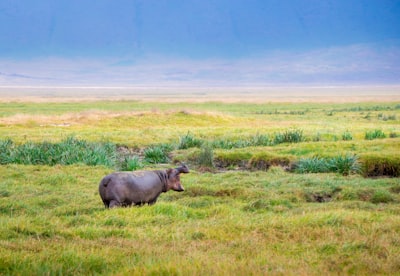
The Crater Floor The crater floor is the primary draw for visitors to Ngorongoro. This 100-square-mile expanse is a natural wildlife haven, home to an estimated 25,000 large animals, including the "Big Five" (lions, leopards, rhinoceros, elephants, and buffalo). Visitors can expect to see a wide range of species, such as wildebeests, zebras, gazelles, and even the elusive black rhino. The best way to explore the crater floor is through a guided safari tour, which allows you to get up close and personal with the resident wildlife. Olduvai Gorge Olduvai Gorge, also known as the "Cradle of Humanity," is a renowned archaeological site located just outside the Ngorongoro Conservation Area. This is where some of the earliest known human fossils, including the famous "Lucy" specimen, have been discovered. Visitors can explore the on-site museum and take guided tours of the excavation sites, learning about the fascinating history of human evolution. Maasai Cultural Village The Ngorongoro Conservation Area is home to the Maasai people, a semi-nomadic tribe known for their distinctive culture and traditional way of life. Visitors can experience the Maasai culture firsthand by visiting a Maasai cultural village, where they can witness traditional dances, learn about the Maasai's unique customs, and even purchase handcrafted souvenirs. Empakaai Crater Empakaai Crater is a lesser-known but equally stunning attraction within the Ngorongoro Conservation Area. This 6-mile-wide caldera is home to a shallow, alkaline lake that attracts a variety of bird species, including flamingos. Visitors can hike down into the crater for a closer look at the lake and the surrounding landscape. Olmoti Crater Olmoti Crater is another impressive geological feature within the Ngorongoro Conservation Area. This smaller caldera features a lush, grassy floor and is home to a variety of wildlife, including the elusive mountain reedbuck. Visitors can hike to the rim of the crater for panoramic views of the surrounding landscape. Lerai Forest The Lerai Forest, located on the rim of the Ngorongoro Crater, is a lush, verdant oasis that provides a welcome respite from the open grasslands of the crater floor. This forest is home to a diverse array of bird species, as well as the occasional leopard or elephant. Visitors can explore the forest on guided walking safaris or simply enjoy the tranquility of the shaded trails. Ngorongoro Sopa Lodge While not a natural attraction, the Ngorongoro Sopa Lodge is a must-visit destination for travelers seeking a luxurious and comfortable base from which to explore the Ngorongoro Crater. This eco-friendly lodge offers stunning views of the crater and provides a range of amenities, including a swimming pool, spa, and fine dining options. In conclusion, Ngorongoro Crater is a truly remarkable destination that offers a wealth of natural and cultural attractions for visitors to explore. From the diverse wildlife of the crater floor to the rich history of Olduvai Gorge, there is something for everyone in this stunning corner of Tanzania.
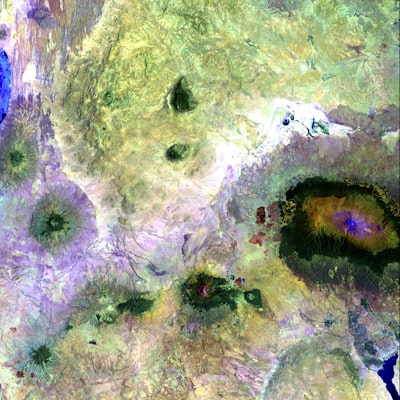
Mount Kilimanjaro The iconic snow-capped peak of Mount Kilimanjaro is the main draw of the national park. Standing at 5,895 meters (19,341 feet) above sea level, it is the highest free-standing mountain in the world and the highest point in Africa. Hiking to the summit is a challenging but rewarding experience, offering breathtaking views and a sense of accomplishment. Machame Route The Machame Route, also known as the "Whiskey Route," is one of the most popular and scenic routes to the summit of Mount Kilimanjaro. This route takes hikers through diverse landscapes, including lush rainforests, alpine meadows, and rocky terrain, before reaching the final ascent to the summit. Shira Plateau The Shira Plateau is a high-altitude plateau located on the western side of Mount Kilimanjaro. This area is known for its stunning landscapes, including volcanic rock formations, glaciers, and alpine lakes. Hikers can explore the plateau and enjoy the panoramic views of the surrounding mountains. Barranco Wall The Barranco Wall is a challenging section of the Kilimanjaro climb, where hikers must navigate a steep, rocky section of the mountain. The views from the top of the wall are breathtaking, offering a unique perspective of the mountain and the surrounding landscape. Kilimanjaro Glaciers The glaciers of Mount Kilimanjaro are a testament to the mountain's impressive height and the effects of climate change. Hikers can witness the shrinking glaciers and learn about the environmental challenges facing this iconic natural wonder. Uhuru Peak Uhuru Peak is the highest point on Mount Kilimanjaro and the ultimate goal for many hikers. Reaching the summit is a significant accomplishment and offers unparalleled views of the surrounding landscape, including the vast expanse of the African continent. Mawenzi Peak Mawenzi Peak is the second-highest peak on Mount Kilimanjaro, standing at 5,149 meters (16,893 feet) above sea level. This technical and challenging climb is reserved for experienced mountaineers, offering a unique and thrilling experience for those seeking a more adventurous ascent. Kilimanjaro Rainforest The lower slopes of Mount Kilimanjaro are covered in a lush, tropical rainforest, home to a diverse array of plant and animal life. Hikers can explore the forest, spotting unique species of birds, primates, and other wildlife. Marangu Route The Marangu Route, also known as the "Coca-Cola Route," is one of the most popular and accessible routes to the summit of Mount Kilimanjaro. This route is known for its relatively gentle slopes and well-developed infrastructure, making it a popular choice for first-time hikers. Kilimanjaro National Park Headquarters The Kilimanjaro National Park Headquarters is the starting point for many Kilimanjaro expeditions. Visitors can obtain permits, hire guides and porters, and gather information about the park and its regulations. Kilimanjaro Trekking Camps Along the various hiking routes, there are well-established trekking camps that provide accommodation, meals, and support services for hikers. These camps offer a comfortable and safe base for exploring the mountain and its surroundings. Kilimanjaro Ecosystem The Kilimanjaro ecosystem is a diverse and fragile environment, home to a wide range of plant and animal species. Visitors can learn about the conservation efforts to protect this unique ecosystem and the challenges it faces due to climate change and human activity.
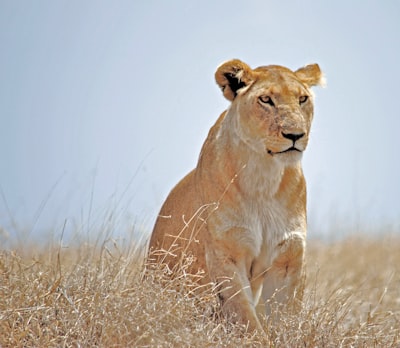
The Great Migration The Serengeti is home to the Great Migration, one of the most spectacular natural events on the planet. Millions of wildebeest, zebra, and other grazing animals embark on an annual circular migration, following the rains and in search of fresh grazing grounds. Witnessing this massive movement of wildlife is a once-in-a-lifetime opportunity for visitors. Ngorongoro Crater The Ngorongoro Crater, a UNESCO World Heritage Site, is a breathtaking natural wonder. This ancient volcanic caldera is home to a diverse array of wildlife, including the rare black rhino, lions, elephants, and more. Visitors can take a guided tour of the crater floor, offering a unique perspective on the region's ecosystems. Seronera Valley The Seronera Valley is the heart of the Serengeti, known for its high concentration of wildlife. This area is particularly famous for its large lion population, as well as the opportunity to spot cheetahs, leopards, and other predators in their natural habitat. Grumeti River Crossing The Grumeti River Crossing is a thrilling spectacle during the Great Migration, as millions of wildebeest and zebra brave the treacherous waters, facing the threat of crocodiles and other predators. Witnessing this dramatic event is a true highlight for many visitors to the Serengeti. Olduvai Gorge Olduvai Gorge, often referred to as the "Cradle of Humanity," is a significant archaeological site where some of the earliest human fossils have been discovered. Visitors can explore the on-site museum and learn about the region's rich human history. Maasai Culture The Serengeti is home to the Maasai people, a semi-nomadic tribe known for their distinctive culture and traditions. Visitors can arrange cultural tours to learn about the Maasai way of life, including their traditional dress, music, and customs. Kopjes The Serengeti is dotted with kopjes, or rocky outcrops, which provide important habitats for a variety of wildlife. These formations offer excellent vantage points for spotting lions, leopards, and other predators as they survey their domain. Serengeti Balloon Safaris For a truly unique perspective on the Serengeti, visitors can embark on a hot air balloon safari. These early morning flights offer breathtaking views of the vast landscapes and the opportunity to spot wildlife from above. Serengeti Visitor Center The Serengeti Visitor Center is an excellent resource for visitors, providing information about the park's history, ecology, and conservation efforts. Visitors can also explore interactive exhibits and learn about the region's diverse flora and fauna. Moru Kopjes The Moru Kopjes are a popular destination within the Serengeti, known for their high concentration of wildlife, including lions, leopards, and cheetahs. Visitors can explore the area on guided game drives and witness the predators in their natural habitat. Gol Mountains The Gol Mountains, located in the northern region of the Serengeti, offer stunning vistas and the opportunity to spot a variety of wildlife, including the elusive black rhino. Retima Hippo Pool The Retima Hippo Pool is a must-visit attraction for visitors to the Serengeti. This natural pool is home to a large population of hippopotamuses, providing a unique opportunity to observe these massive creatures in their natural environment. Serengeti National Park is a true natural wonder, offering visitors an unparalleled wildlife experience. From the awe-inspiring Great Migration to the diverse ecosystems and rich cultural heritage, this destination is a must-visit for any traveler seeking an unforgettable adventure.
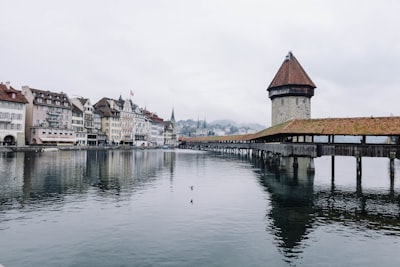
The Matterhorn Glacier Paradise: This is the highest cable car station in Europe, offering breathtaking views of the Matterhorn and the surrounding glaciers. Visitors can explore the ice palace, take a stroll on the suspension bridge, and enjoy the panoramic observation deck. Zermatt: The charming alpine village of Zermatt is the gateway to the Matterhorn and offers a wealth of activities and attractions. Stroll through the car-free town, visit the Matterhorn Museum to learn about the mountain's history, and enjoy the traditional Swiss cuisine in the local restaurants. Gornergrat: Take a cogwheel train to the Gornergrat, a high-altitude observation deck that provides stunning views of the Matterhorn and the surrounding peaks. Hike along the Gornergrat Bahn trail or visit the Gornergrat Kulmhotel, the highest hotel in the Swiss Alps. Schwarzsee: This picturesque alpine lake, located at the foot of the Matterhorn, offers a peaceful retreat from the crowds. Visitors can hike around the lake, enjoy a picnic, or take a dip in the crystal-clear waters. Sunnegga: The Sunnegga funicular takes visitors to a high-altitude plateau with panoramic views of the Matterhorn and the surrounding peaks. Explore the hiking trails, visit the Marmot Park, or enjoy a meal at one of the mountain restaurants. Riffelsee: This serene alpine lake is a popular spot for photographers, as it reflects the majestic Matterhorn in its still waters. Hike to the lake or take the Gornergrat Bahn to the nearby Riffelalp station. Hörnlihütte: This historic mountain hut, located at the base of the Matterhorn, is a popular starting point for climbers attempting to summit the iconic peak. Visitors can learn about the history of mountaineering in the region and enjoy the stunning views. These are just a few of the must-see attractions in the Matterhorn region. Whether you're seeking adventure, natural beauty, or cultural experiences, this stunning corner of Switzerland has something to offer every traveler.
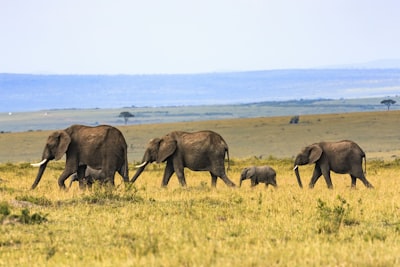
1. Olifants River: The Olifants River is a major waterway that runs through the heart of Kruger National Park. This river is a vital source of water for the park's diverse wildlife, and it is a popular spot for game viewing, particularly during the dry season when animals congregate along the riverbanks. 2. Letaba Elephant Hall: The Letaba Elephant Hall is a museum dedicated to the study and conservation of African elephants. Visitors can learn about the history, behavior, and ecology of these magnificent creatures, as well as the challenges they face in the wild. 3. Makuleke Concession: The Makuleke Concession is a private concession within Kruger National Park that offers visitors a more exclusive and intimate safari experience. This area is known for its diverse wildlife, including the Big Five (lion, leopard, rhinoceros, elephant, and buffalo), as well as a variety of other species. 4. Bushman Paintings: Kruger National Park is home to numerous rock art sites that feature ancient Bushman paintings. These paintings provide a glimpse into the rich cultural heritage of the region and offer visitors a unique opportunity to connect with the history of the land. 5. Shingwedzi River: The Shingwedzi River is another major waterway in Kruger National Park that is a popular spot for game viewing. Visitors can spot a variety of wildlife, including hippos, crocodiles, and a wide range of bird species, along the riverbanks. 6. Birdwatching: Kruger National Park is a birdwatcher's paradise, with over 500 species of birds recorded within the park's boundaries. Visitors can spot a wide range of species, from the iconic African fish eagle to the colorful lilac-breasted roller. 7. Skukuza Rest Camp: Skukuza is the largest rest camp in Kruger National Park and serves as the administrative center of the park. Visitors can explore the camp's various facilities, including restaurants, shops, and a museum, as well as embark on guided game drives and bush walks. 8. Mopani Rest Camp: Mopani Rest Camp is located in the northern region of Kruger National Park and is known for its stunning scenery, including the Olifants River and the Mopani bushveld. Visitors can enjoy a variety of activities, such as game drives, bush walks, and bird watching. 9. Satara Rest Camp: Satara Rest Camp is situated in the central region of Kruger National Park and is known for its high concentration of predators, including lions, leopards, and cheetahs. Visitors can explore the camp's various facilities, including a restaurant, a shop, and a swimming pool. 10. Crocodile Bridge Rest Camp: Crocodile Bridge Rest Camp is located in the southern region of Kruger National Park and is known for its proximity to the Crocodile River, which is home to a large population of crocodiles and hippos. Visitors can enjoy a variety of activities, such as game drives, river cruises, and bird watching. These are just a few of the many must-see attractions in Kruger National Park. Whether you're interested in wildlife, culture, or natural beauty, this incredible destination has something to offer every traveler.
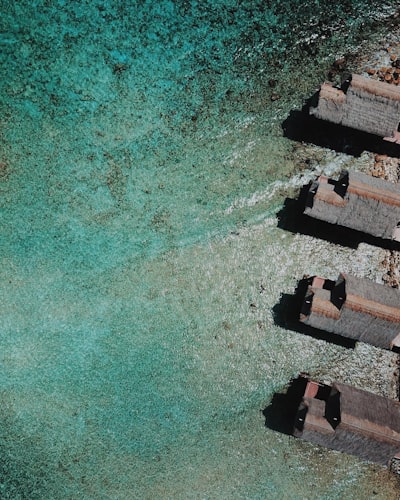
El Nido: Explore the stunning limestone cliffs, hidden lagoons, and crystal-clear waters of El Nido. Take a boat tour to visit the famous Big and Small Lagoons, Secret Lagoon, and Shimizu Island. Don't miss the opportunity to snorkel or dive in the vibrant coral reefs. Coron: Discover the breathtaking Coron Island, home to the iconic Kayangan Lake, considered one of the cleanest lakes in the Philippines. Hike to the Maquinit Hot Springs, a unique saltwater hot spring, and visit the Japanese shipwrecks for world-class diving. Puerto Princesa Subterranean River National Park: Embark on a guided boat tour through the world's longest navigable underground river, a UNESCO World Heritage Site. Marvel at the stunning limestone formations and diverse cave ecosystems. Tubbataha Reef: This UNESCO World Heritage Site is a renowned dive destination, offering some of the best coral reefs and marine life in the world. Accessible only by liveaboard, it's a must-visit for avid divers. Palawan Wildlife Rescue and Conservation Center: Witness the rehabilitation efforts for endangered species, such as the Philippine Cockatoo and the Palawan Pangolin. Learn about the island's unique biodiversity and conservation initiatives. Nacpan Beach: Escape the crowds and enjoy the serene, white-sand beaches of Nacpan. Relax under the swaying palm trees or explore the nearby Nagkalit-kalit Falls. Batak Tribal Village: Immerse yourself in the traditional way of life of the indigenous Batak people. Learn about their culture, customs, and crafts, and support their community. Iwahig Firefly Watching: Experience the magical sight of thousands of fireflies lighting up the mangrove forests along the Iwahig River. This unique natural phenomenon is a must-see during your visit. These are just a few of the many incredible attractions that Palawan Island has to offer. With its stunning natural beauty, rich biodiversity, and unique cultural experiences, Palawan is a true gem of the Philippines.
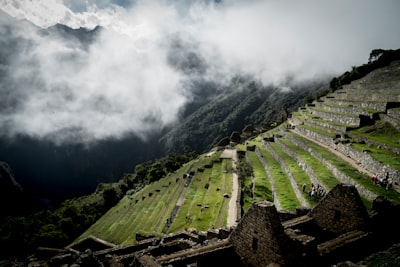
Machu Picchu Ruins: The main attraction, these well-preserved Inca ruins offer a glimpse into the ancient civilization's architectural prowess and spiritual connection to the land. Explore the Temple of the Sun, the Intihuatana Stone, and the iconic terraced structures. Huayna Picchu: This steep mountain offers breathtaking views of Machu Picchu from above. The hike to the top is challenging but rewarding, with opportunities to see the Inca Bridge and the Temple of the Moon. Inca Trail: One of the world's most famous hikes, the Inca Trail is a multi-day trek that winds through the Andes, passing ancient ruins, lush cloud forests, and stunning mountain vistas before reaching Machu Picchu. Aguas Calientes: This charming town at the base of Machu Picchu serves as the gateway to the ruins. Explore the local markets, indulge in Peruvian cuisine, and take the bus or train up to the site. Putucusi Mountain: For a less crowded but equally stunning viewpoint, hike to the top of Putucusi Mountain, which offers panoramic vistas of Machu Picchu and the surrounding peaks. Ollantaytambo: This Inca fortress and town, located along the Sacred Valley, is a fascinating stop on the way to or from Machu Picchu, with well-preserved ruins and a charming historic center. Pisac: Visit the Pisac Inca ruins, which feature impressive agricultural terraces and a bustling Sunday market, where you can find handcrafted textiles, jewelry, and other local crafts.
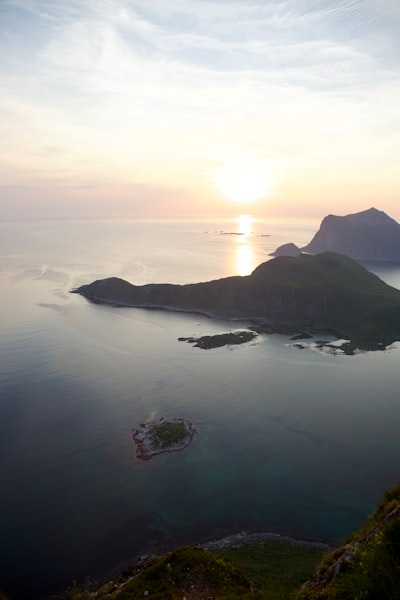
Reine: Considered one of the most picturesque villages in Lofoten, Reine is a quaint fishing hamlet nestled between towering mountains and crystal-clear waters. Stroll through the colorful wooden houses, visit the local art galleries, and take in the stunning views from the nearby viewpoints. Kvalvika Beach: This remote and secluded beach is a true gem of the Lofoten Islands. Accessible only by a short hike, Kvalvika Beach offers a serene and peaceful setting, with its white sand, turquoise waters, and dramatic cliffs. Nusfjord: Designated as a UNESCO World Heritage Site, Nusfjord is a well-preserved fishing village that offers a glimpse into the traditional way of life in Lofoten. Explore the historic buildings, visit the local fish processing facilities, and enjoy the tranquil atmosphere. Reinebringen: For the adventurous traveler, the hike to the top of Reinebringen offers unparalleled views of the Lofoten archipelago. The challenging trail rewards hikers with a panoramic vista of the surrounding mountains, fjords, and islands. Lofoten Aquarium: Discover the diverse marine life of the Lofoten Islands at the Lofoten Aquarium. Explore the various exhibits, learn about the local ecosystem, and even have the opportunity to touch and interact with some of the aquarium's inhabitants. Lofotr Viking Museum: Step back in time and immerse yourself in the rich Viking history of the Lofoten Islands at the Lofotr Viking Museum. Tour the reconstructed Viking longhouse, attend traditional Viking feasts, and learn about the daily life and customs of these ancient seafarers. Henningsvær: Often referred to as the "Venice of Lofoten," Henningsvær is a charming fishing village built on a series of small islands. Wander through the quaint streets, visit the local art galleries and workshops, and enjoy the stunning views of the surrounding mountains and fjords. These are just a few of the must-see attractions that make the Lofoten Islands a truly unique and unforgettable travel destination. Whether you're seeking breathtaking natural beauty, cultural immersion, or outdoor adventure, this remarkable region of Norway has something to offer every traveler.
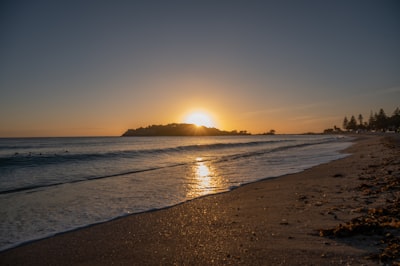
1. Tasman Glacier Viewpoint: Hike to the stunning viewpoint overlooking the Tasman Glacier, where you can witness the impressive size and scale of this massive ice formation. 2. Tasman Glacier Terminal Lake: Take a boat tour or kayak on the turquoise waters of the Tasman Glacier Terminal Lake, surrounded by towering icy cliffs and floating icebergs. 3. Hooker Valley Track: Embark on the Hooker Valley Track, a scenic hike that offers breathtaking views of the Tasman Glacier, the Hooker River, and the iconic Aoraki/Mount Cook. 4. Tasman Glacier Heli-Hike: Experience the thrill of a helicopter ride and a guided hike on the Tasman Glacier, where you can explore the ice formations, crevasses, and seracs up close. 5. Sir Edmund Hillary Alpine Centre: Visit the Sir Edmund Hillary Alpine Centre, a museum dedicated to the legendary mountaineer and his achievements, including his first ascent of Aoraki/Mount Cook. 6. Tasman Valley 4WD Tour: Embark on a thrilling 4WD tour through the Tasman Valley, where you can witness the stunning landscapes and learn about the region's geological history. 7. Tasman Glacier Scenic Flights: Take to the skies and enjoy a scenic flight over the Tasman Glacier, offering a unique perspective of the vast ice formation and the surrounding mountain ranges. These are just a few of the must-see attractions in the Tasman Glacier region. Whether you're seeking adventure, natural beauty, or cultural experiences, this destination has something to offer every traveler.
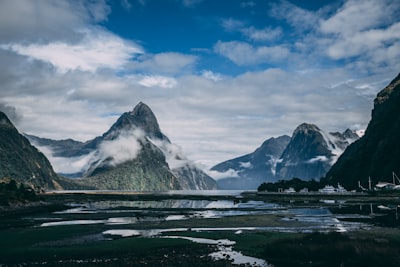
Milford Sound Cruise: The quintessential Milford Sound experience, a cruise along the fiord is a must-do activity. Glide past towering cliffs, cascading waterfalls, and spot wildlife such as seals, dolphins, and even the rare Fiordland crested penguin. Many cruise operators offer different options, from short sightseeing tours to longer excursions that include stops for kayaking or hiking. Stirling Falls: One of the most impressive waterfalls in Milford Sound, Stirling Falls plunges an impressive 151 meters (495 feet) from the cliffs above. Many cruise operators will bring their boats close to the base of the falls, allowing you to feel the mist and power of this natural wonder. Bowen Falls: Another iconic Milford Sound waterfall, Bowen Falls is a stunning 162-meter (531-foot) cascade that originates from Lake Quill high in the mountains. The falls are particularly impressive after heavy rainfall, when the volume of water increases dramatically. Underwater Observatory: Located at the Milford Sound Lodge, the Milford Sound Underwater Observatory offers a unique perspective on the fiord's marine life. Descend 10 meters (33 feet) below the surface to observe the diverse array of fish, invertebrates, and other aquatic creatures that call Milford Sound home. Milford Sound Foreshore Walks: Explore the scenic walking trails along the Milford Sound foreshore, which offer stunning views of the fiord and the surrounding mountains. The Milford Sound Lodge and Sandfly Point are popular starting points for these walks. Hike to the Sutherland Falls: For the more adventurous, a hike to the Sutherland Falls, one of the highest uninterrupted waterfalls in the world, is a rewarding experience. The 19-kilometer (12-mile) round-trip hike is challenging but offers breathtaking views of the falls and the surrounding wilderness. Scenic Flights: Soar above Milford Sound and the Fiordland National Park on a scenic flight, which provides a unique aerial perspective of the region's dramatic landscapes. Helicopter and fixed-wing aircraft tours are available, offering a range of options to suit your preferences. Pio Pio Waterfall: Located just a short distance from the Milford Sound Lodge, the Pio Pio Waterfall is a hidden gem that is often overlooked by visitors. This picturesque cascade is a great spot for a peaceful stroll and photography. Fiordland National Park Visitor Center: Before or after your Milford Sound adventure, visit the Fiordland National Park Visitor Center in Te Anau. Here, you can learn about the region's rich history, geology, and wildlife, as well as plan additional activities and excursions. Doubtful Sound: While Milford Sound is the more famous of the two, a visit to the equally stunning Doubtful Sound is also highly recommended. This remote and pristine fiord offers a quieter and more serene experience, with opportunities for kayaking, cruising, and hiking. By incorporating these must-see attractions into your Milford Sound itinerary, you'll be able to fully immerse yourself in the breathtaking natural beauty and unique experiences that this remarkable destination has to offer. Whether you're seeking awe-inspiring landscapes, wildlife encounters, or outdoor adventures, Milford Sound is sure to leave a lasting impression.

Milford Sound: Arguably the most famous of Fiordland's fiords, Milford Sound is a dramatic landscape of towering cliffs, cascading waterfalls, and abundant wildlife. Cruise through the serene waters and witness the awe-inspiring Mitre Peak, one of the most photographed mountains in New Zealand. Doubtful Sound: Larger and more remote than Milford Sound, Doubtful Sound offers a more tranquil and secluded experience. Explore the pristine fiord by boat or kayak, and keep an eye out for bottlenose dolphins, fur seals, and the rare Fiordland crested penguin. Lake Manapouri: This stunning glacial lake is surrounded by the rugged peaks of the Kepler and Murchison Mountains. Take a scenic drive around the lake or hike one of the many trails for breathtaking views. Kepler Track: One of New Zealand's Great Walks, the Kepler Track offers a challenging multi-day hike through diverse landscapes, including alpine meadows, beech forests, and glacial valleys. Hollyford Track: For a more leisurely hike, the Hollyford Track takes you through ancient rainforests, past cascading waterfalls, and along the stunning Hollyford River. Fiordland National Park is a true natural wonder, offering a unique and unforgettable experience for any traveler. Whether you choose to explore the fiords by boat, hike through the pristine wilderness, or simply take in the breathtaking scenery, this destination is sure to leave a lasting impression.
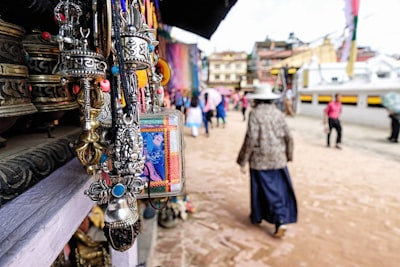
1. Mount Everest Base Camp: The ultimate goal for many trekkers, the Base Camp of the world's highest mountain, Mount Everest, is a truly awe-inspiring sight. The journey to the Base Camp takes you through stunning landscapes, including glaciers, moraine, and the iconic Khumbu Icefall. 2. Kala Patthar: Situated at an elevation of 5,643 meters (18,514 feet), Kala Patthar offers breathtaking panoramic views of the Everest massif, including the summit of the world's highest mountain. The trek to Kala Patthar is challenging but the reward is a once-in-a-lifetime experience. 3. Tengboche Monastery: This iconic Buddhist monastery, dating back to the 17th century, is a cultural and spiritual centerpiece of the Khumbu region. The monastery's stunning location, surrounded by the Himalayas, makes it a must-visit destination for those interested in Tibetan Buddhism and the region's rich cultural heritage. 4. Namche Bazaar: Often referred to as the "Sherpa Capital," Namche Bazaar is a vibrant hub of activity and a popular acclimatization stop for trekkers. The bustling market offers a glimpse into the local Sherpa culture, with traditional handicrafts, clothing, and delicious local cuisine. 5. Gokyo Lakes: The stunning Gokyo Lakes, a series of six glacial lakes, are a breathtaking sight. The trek to the Gokyo Valley offers stunning views of the Himalayan peaks, including the Gokyo Ri viewpoint, which provides a panoramic vista of the Everest range. 6. Ama Dablam Base Camp: The trek to the Base Camp of the iconic Ama Dablam mountain, often referred to as the "Matterhorn of the Himalayas," is a challenging but rewarding experience. The stunning views of this majestic peak and the surrounding landscape make the trek well worth the effort. 7. Thame Monastery: This ancient monastery, located in the Thame village, is a significant cultural and historical site in the Khumbu region. The monastery is known for its impressive architecture and its role in the preservation of Tibetan Buddhist traditions. 8. Phortse Village: The traditional Sherpa village of Phortse is a charming destination that offers a glimpse into the local way of life. Visitors can explore the village, interact with the friendly locals, and learn about the Sherpa culture and their deep connection to the Himalayas. 9. Everest View Hotel: Situated at an elevation of 3,880 meters (12,713 feet), the Everest View Hotel offers stunning panoramic views of the Everest massif and the surrounding peaks. This unique hotel provides an opportunity to experience the grandeur of the Himalayas without the need for a strenuous trek. 10. Sagarmatha National Park Visitor Center: The Sagarmatha National Park Visitor Center is an excellent resource for learning about the park's ecology, wildlife, and the local Sherpa culture. Visitors can explore interactive exhibits, attend educational programs, and obtain valuable information to enhance their trekking experience. These must-see attractions in Sagarmatha National Park offer a diverse range of experiences, from challenging treks to cultural immersion and breathtaking natural wonders. Whether you're a seasoned trekker or a first-time visitor, this remarkable destination is sure to leave a lasting impression and create unforgettable memories.